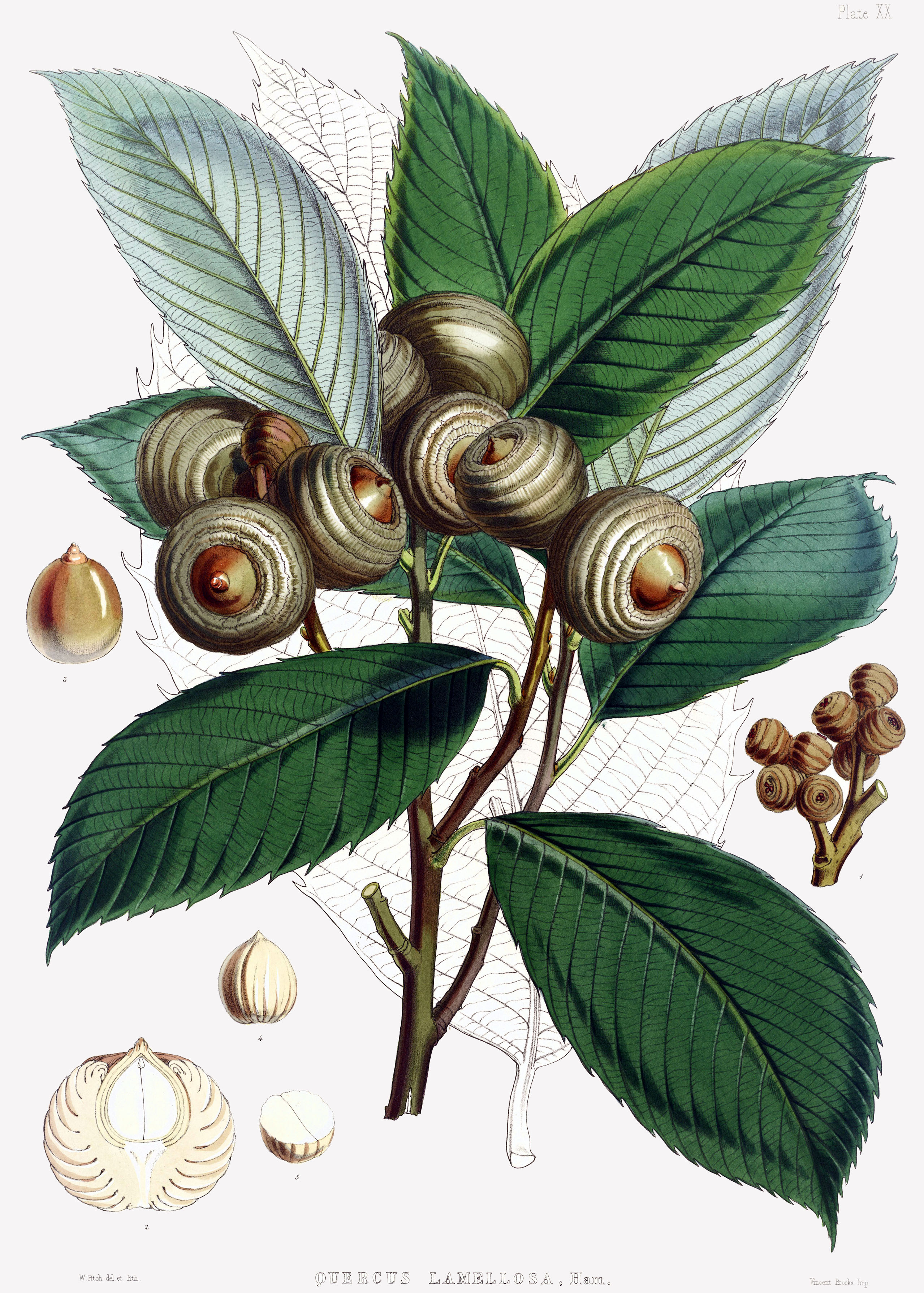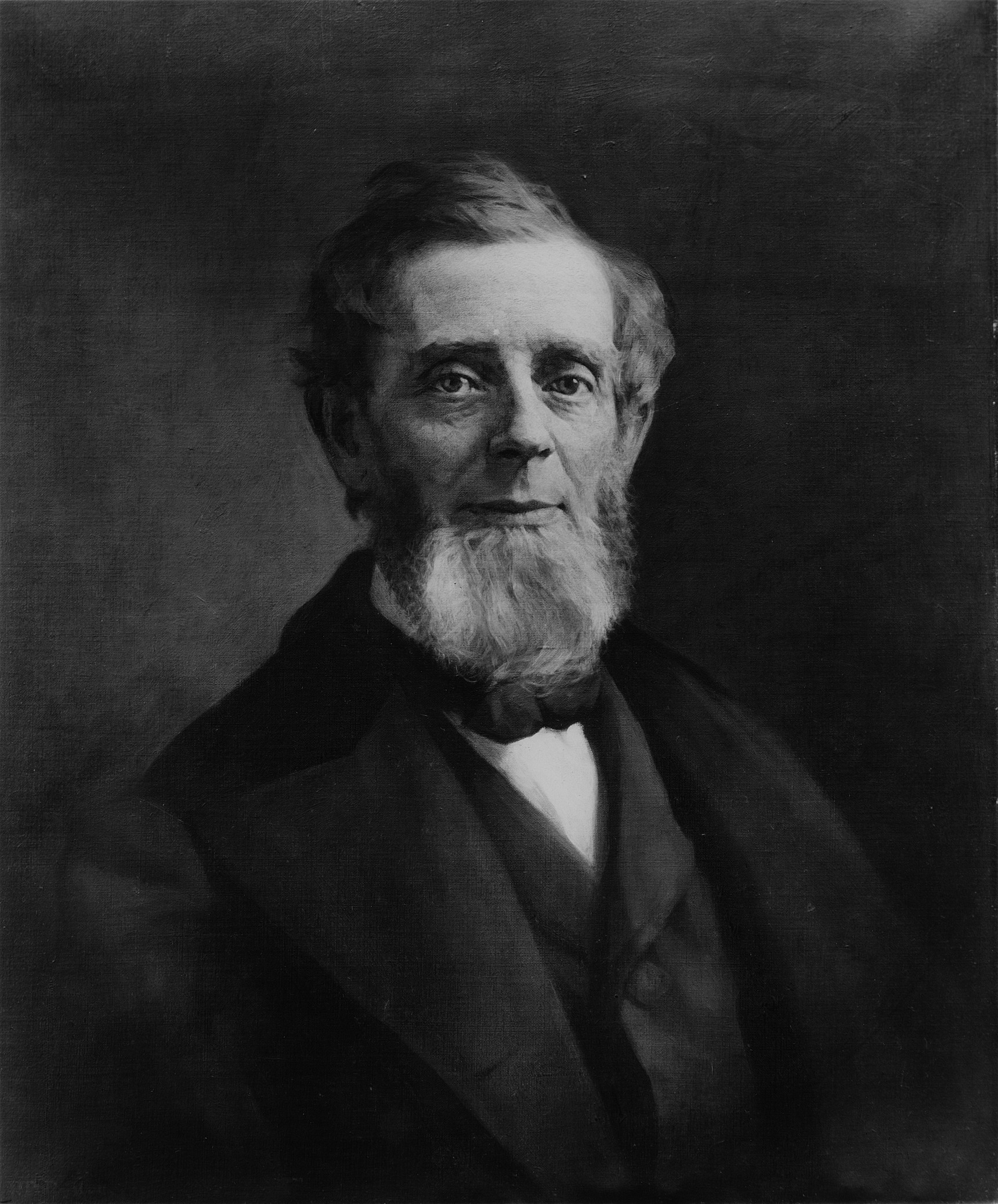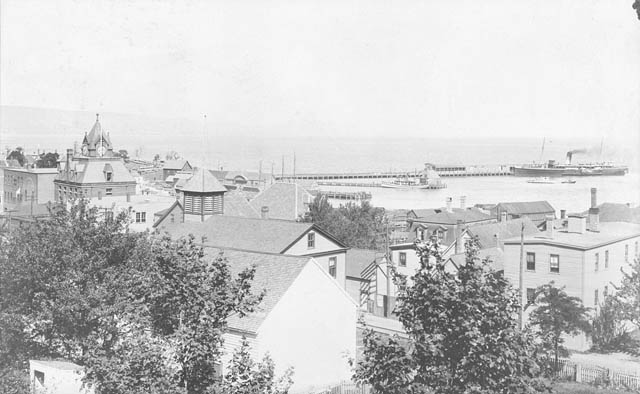|
Effie M. Morrissey
''Effie M. Morrissey'' (now ''Ernestina-Morrissey'') is a schooner skippered by Robert Bartlett that made many scientific expeditions to the Arctic, sponsored by American museums, the Explorers Club and the National Geographic Society. She also helped survey the Arctic for the United States Government during World War II. She is currently designated by the United States Department of the Interior as a National Historic Landmark as part of the New Bedford Whaling National Historical Park. She is the State Ship of Massachusetts. History Designed by George McClain of Gloucester, Massachusetts to withstand North Atlantic gales, ''Effie M. Morrissey'' was the last fishing schooner built for the Wonson Fish Company. Built with white oak and yellow pine at the John F. James & Washington Tarr shipyard, she took four months to build and was launched 1 February 1894. Her hull was painted black and her first skipper was William Edward Morrissey, who named her after his daughter Effie Maude ... [...More Info...] [...Related Items...] OR: [Wikipedia] [Google] [Baidu] |
Essex, Massachusetts
Essex is a coastal town in Essex County, Massachusetts, 26 miles (42 km) north of Boston and 13 miles (21 km) southeast of Newburyport. It is known for its former role as a center of shipbuilding. The population was 3,675 at the 2020 census. The central village areas of Essex and South Essex make up the census-designated place of Essex. History Essex was incorporated as a town in 1819. It was previously a part of the town of Ipswich and was then called Chebacco Parish. The first European settlers arrived in 1634. At that time, the land formed part of an area inhabited by Native Americans of the Agawam tribe. The name ''Chebacco'' is Agawam in origin and refers to a large lake whose waters extend into neighboring Hamilton. Conomo Point, the easternmost part of the town, is named for the Sagamore or Chief of the Agawams, Masconomo, the leader of the tribe in the late 17th century. Early on, Chebacco Parish lobbied for status as an independent town, asking for permis ... [...More Info...] [...Related Items...] OR: [Wikipedia] [Google] [Baidu] |
White Oak
The genus ''Quercus'' contains about 500 species, some of which are listed here. The genus, as is the case with many large genera, is divided into subgenera and sections. Traditionally, the genus ''Quercus'' was divided into the two subgenera ''Cyclobalanopsis'', the ring-cupped oaks, and ''Quercus'', which included all the other sections. However, a comprehensive revision in 2017 identified different relationships. Now the genus is commonly divided into a subgenus ''Quercus'' and a sugenus ''Cerris'', with ''Cyclobalanopsis'' included in the latter. The sections of subgenus ''Quercus'' are mostly native to the New World, with the notable exception of the white oaks of sect. ''Quercus'' and the endemic Quercus pontica. In contrast, the sections of the subgenus ''Cerris'' are exclusively native to the Old World. Legend Species with evergreen foliage ("live oaks") are tagged '#'. Species in the genus have been recategorized between deciduous and evergreen on numerous occasions, alt ... [...More Info...] [...Related Items...] OR: [Wikipedia] [Google] [Baidu] |
George Palmer Putnam
George Palmer Putnam (February 7, 1814 – December 20, 1872) was an American publisher and author. He founded the firm G. P. Putnam's Sons and ''Putnam's Magazine''. He was an advocate of international copyright reform, secretary for many years of the Publishers' Association, and founding superintendent of the Metropolitan Museum of Art. Early life Putnam was born in Brunswick, Maine on February 7, 1814. On moving to New York City, Putnam was given his first job by Jonathan Leavitt, who subsequently published Putnam's first book. In 1838, Putnam and John Wiley established the publishing house of Wiley & Putnam in New York City. In 1841, Putnam went to London where he set up a branch office, the first American to ever do so. In 1848 he returned to New York where he dissolved the partnership with John Wiley and established G. Putnam Broadway, publishing a variety of works including quality illustrated books. Career In 1852, with the assistance of George William Curtis and other ... [...More Info...] [...Related Items...] OR: [Wikipedia] [Google] [Baidu] |
American Museum Of National History
The American Museum of Natural History (abbreviated as AMNH) is a natural history museum on the Upper West Side of Manhattan in New York City. In Theodore Roosevelt Park, across the street from Central Park, the museum complex comprises 26 interconnected buildings housing 45 permanent exhibition halls, in addition to a planetarium and a library. The museum collections contain over 34 million specimens of plants, animals, fossils, minerals, rocks, meteorites, human remains, and human cultural artifacts, as well as specialized collections for frozen tissue and genomic and astrophysical data, of which only a small fraction can be displayed at any given time. The museum occupies more than . AMNH has a full-time scientific staff of 225, sponsors over 120 special field expeditions each year, and averages about five million visits annually. The AMNH is a private 501(c)(3) organization. Its mission statement is: "To discover, interpret, and disseminate—through scientific research and e ... [...More Info...] [...Related Items...] OR: [Wikipedia] [Google] [Baidu] |
George P
George may refer to: People * George (given name) * George (surname) * George (singer), American-Canadian singer George Nozuka, known by the mononym George * George Washington, First President of the United States * George W. Bush, 43rd President of the United States * George H. W. Bush, 41st President of the United States * George V, King of Great Britain, Ireland, the British Dominions and Emperor of India from 1910-1936 * George VI, King of Great Britain, Ireland, the British Dominions and Emperor of India from 1936-1952 * Prince George of Wales * George Papagheorghe also known as Jorge / GEØRGE * George, stage name of Giorgio Moroder * George Harrison, an English musician and singer-songwriter Places South Africa * George, Western Cape ** George Airport United States * George, Iowa * George, Missouri * George, Washington * George County, Mississippi * George Air Force Base, a former U.S. Air Force base located in California Characters * George (Peppa Pig), a 2-year-old pig ... [...More Info...] [...Related Items...] OR: [Wikipedia] [Google] [Baidu] |
Newfoundland And Labrador
Newfoundland and Labrador (; french: Terre-Neuve-et-Labrador; frequently abbreviated as NL) is the easternmost province of Canada, in the country's Atlantic region. The province comprises the island of Newfoundland and the continental region of Labrador, having a total size of 405,212 square kilometres (156,500 sq mi). In 2021, the population of Newfoundland and Labrador was estimated to be 521,758. The island of Newfoundland (and its smaller neighbouring islands) is home to around 94 per cent of the province's population, with more than half residing in the Avalon Peninsula. Labrador borders the province of Quebec, and the French overseas collectivity of Saint Pierre and Miquelon lies about 20 km west of the Burin Peninsula. According to the 2016 census, 97.0 per cent of residents reported English as their native language, making Newfoundland and Labrador Canada's most linguistically homogeneous province. A majority of the population is descended from English and Irish s ... [...More Info...] [...Related Items...] OR: [Wikipedia] [Google] [Baidu] |
Dominion Of Newfoundland
Newfoundland was a British dominion in eastern North America, today the modern Canadian province of Newfoundland and Labrador. It was established on 26 September 1907, and confirmed by the Balfour Declaration of 1926 and the Statute of Westminster of 1931. It included the island of Newfoundland, and Labrador on the continental mainland. Newfoundland was one of the original dominions within the meaning of the Balfour Declaration and accordingly enjoyed a constitutional status equivalent to the other dominions of the time. In 1934, Newfoundland became the only dominion to give up its self-governing status, which ended 79 years of self-government. The abolition of self-government came about because of a crisis in Newfoundland's public finances in 1932. Newfoundland had accumulated a significant amount of debt by building a railway across the island, which was completed in the 1890s, and by raising its own regiment during World War I. In November 1932, the government warned th ... [...More Info...] [...Related Items...] OR: [Wikipedia] [Google] [Baidu] |
Brigus, Newfoundland And Labrador
Brigus is a small fishing community located in Conception Bay, Newfoundland and Labrador, Canada. Brigus was home to Captain Bob Bartlett and the location of his residence Hawthorne Cottage.Canada travel guide. Lonely Planet 14th Edition (2020). 896 pag. Brigus was incorporated in July 1964. Its first mayor was Fred Bartlett. The current mayor is Shears Mercer Jr. Rev. R. Wells was the first clergy mayor elected in the province. Geography Located in a sheltered bay, it has been home to many fishermen and a strategic location in early times. Brigus is located adjacent to Cuper's Cove (modern day Cupids), an English settlement established in 1610 by John Guy on behalf of Bristol's Society of Merchant Venturers. Brigus is located approximately 80 km west of St. John's, and is accessible via Route 70-A just 18 km from the Trans Canada Highway (TCH). Demographics In the 2021 Census of Population conducted by Statistics Canada, Brigus had a population of living in o ... [...More Info...] [...Related Items...] OR: [Wikipedia] [Google] [Baidu] |
Helen Creighton
Mary Helen Creighton, CM (September 5, 1899 – December 12, 1989) was a prominent Canadian folklorist. She collected over 4,000 traditional songs, stories, and beliefs in a career that spanned several decades, and she published many books and articles on Nova Scotia folk songs and folklore. She received numerous honorary degrees for her work and was made a Member of the Order of Canada in 1976. Early life Born on Portland Street in Dartmouth, Nova Scotia, she developed an early interest in folklore and the super natural. She had a sister who suffered from a mental disability. Between 1914 and 1916 she attended Halifax Ladies College and earned a junior diploma in music at McGill University in 1915. In 1918, she joined the Royal Flying Corps in Toronto and by 1920, she had returned to Nova Scotia as an paramedic with the Red Cross Caravan. She was dean of women at the University of King's College between 1939 and 1941. Song collecting In 1928, Creighton returned to Nova Scotia ... [...More Info...] [...Related Items...] OR: [Wikipedia] [Google] [Baidu] |
Frederick William Wallace
Frederick William Wallace (December 11, 1886 – July 15, 1958) was a journalist, photographer, historian and novelist. He is best known as the author of ''Wooden Ships and Iron Men'', a now-classic 1924 book about the last days of the Age of Sail in Maritime Canada. Life and career Born in Glasgow, Scotland, he initially worked as a clerk but turned to the sea as a journalist of the fishing industry which later led to historical work. Wallace served in World War I as commander of a Q-Ship. After the war, he edited the monthly journal ''Canadian Fisherman'' which would be his main occupation for forty years. This publication, which ran from 1917 to 1970, remains an important source of information for researchers today. He would also write short stories for such pulp magazines as ''Adventure'' between 1912 and 1922 Wallace began publishing novels in 1907, beginning with ''Blue Water'' and several other works including ‘’Salt Seas and Sailormen’’ (Copyright, Canada 19 ... [...More Info...] [...Related Items...] OR: [Wikipedia] [Google] [Baidu] |
Nova Scotia
Nova Scotia ( ; ; ) is one of the thirteen provinces and territories of Canada. It is one of the three Maritime provinces and one of the four Atlantic provinces. Nova Scotia is Latin for "New Scotland". Most of the population are native English-speakers, and the province's population is 969,383 according to the 2021 Census. It is the most populous of Canada's Atlantic provinces. It is the country's second-most densely populated province and second-smallest province by area, both after Prince Edward Island. Its area of includes Cape Breton Island and 3,800 other coastal islands. The Nova Scotia peninsula is connected to the rest of North America by the Isthmus of Chignecto, on which the province's land border with New Brunswick is located. The province borders the Bay of Fundy and Gulf of Maine to the west and the Atlantic Ocean to the south and east, and is separated from Prince Edward Island and the island of Newfoundland by the Northumberland and Cabot straits, ... [...More Info...] [...Related Items...] OR: [Wikipedia] [Google] [Baidu] |
Digby, Nova Scotia
Digby is an incorporated town in southwestern Nova Scotia, Canada. It is in the historical Digby County, Nova Scotia, county of Digby and a separate municipality from the Municipality of the District of Digby. The town is situated on the western shore of the Annapolis Basin near the entrance to the Digby Gut, which connects the basin to the Bay of Fundy. Named after Robert Digby (Royal Navy officer), Admiral Robert Digby, the town has a scallop fishing fleet. The MV Fundy Rose, MV ''Fundy Rose'' ferry service connects the town to Saint John, New Brunswick. History Digby is called Oositookun, meaning ear of land, by the Mi'kmaq. A small group of New England Planters settled in the area of the town in the 1760s naming it Conway. However Digby was formally settled and surveyed as a town in June 1783 by the United Empire Loyalists under the leadership of Sir Robert Digby (admiral), Robert Digby. The town developed a sizable shipping fleet in the 19th century. One famous Digby vessel ... [...More Info...] [...Related Items...] OR: [Wikipedia] [Google] [Baidu] |






.jpg)

